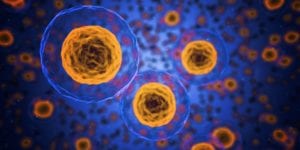In an emerging field of integrative oncology an ancient health system, Tibetan medicine, warrants our attention. Tibetan medicine uses a variety of treatments in preventing and treating such chronic diseases as cancer.
We found that there is very limited research on Tibetan medicine. Very few clinical studies exist on cancer patients utilizing Tibetan medicine. We have put together a small information package of this comprehensive public health care system so little known in Western societies.
An integrated whole health approach
Tibetan medicine has existed as a treatment modality throughout Tibetan regions across Asia and especially Himalaya. With a history going back approximately 2,500 years, the Tibetan medicine is one of the world’s oldest known traditional medicine. It has gained intrigue for its extensive pharmacology and variety of treatment approaches.
Tibetan medicine tracks negative mental states and emotions and their cascading effects on health. Such an approach has provided it with promising potential for collaboration with Western biomedical paradigms and methods. Perceptual and investigatory diagnostic methods, patient-oriented medication, individual-specific diet and behavioral interventions and subtly nuanced therapeutic applications characterize the Tibetan medical system. In this way it enables precise ways to identify, recognize, and treat cancer. Restoration of health and balance in your body is achieved through a dynamic equilibrium of 3 functional energy systems. In general these energy systems, when in balance, help build up and sustain all the physiological and neuropsychological functions of the body and, when in imbalanced condition, manifest different kinds of diseases and pathological conditions.
Diagnosis by pulse and urine analysis
Diagnosis is made via touch, observation and investigative questioning. This gives an understanding of the etiology, pathology, and its multidimensional approach to the successful treatment of imbalances of mental and bodily functions. Pulse and urine analysis form its most important diagnostic methods to produce highly specific and subtly discerned diagnoses. The tibetan physician then uses his own expertise in the thorough understanding and interpretation of pulse and urine analysis, and deep observational skills to uncover the underlying causes of the illness and distress. The diagnosis combines inquiry into the patient’s medical history, diet, behavior, mental states, social relations, and habits that help confirm the findings of the pulse and urine analysis. Additionally, assessments of the patient’s sensory organs and defects help the physician to further deepen his understanding of the disease pattern.
Cancer treatment
The Tibetan medicine describes some several general causes for cancer development: a) Subjecting the body to extreme physical and psychological pressures, b) chronic disruptions in gut metabolism, digestion, and absorption of food that consequently interferes with proper nutrient extraction and waste disposal processes, c) abnormal proliferation of impure blood, d) harmful interactions with and from the natural environment.
Treatment in Tibetan medicine is individualized and uses multiple modalities, chiefly herbal and mineral-based formulas of pills, powders, decoction, and pastes in combination with advice on diet and lifestyle conditions, mental and spiritual inclinations, and social and environmental factors. In addition, accessory therapies may also be administered. Among the therapies can be found meridian massage, hot and cold fomentation, medicinal bath, moxabustion, venesection and cupping.
In Tibetan medicine, a patient population with similar cancer types may have different specific diagnoses of the underlying pathogenesis depending on their body constitution and the energy involved. Therefore, slightly different or additional supporting treatments may be implicated based on their specific constitution, influential factors, and diagnosis. This is similar to a patient-oriented approach of personalized or individualized medicine that is gaining popularity in conventional Western clinical settings.
The Tibetan medical conception of cancer has deeply rooted associations with what is known as yellow liquid and impure blood. Yellow liquid comprises the body’s lymph fluid, blood plasma, interstitial fluid, extra- and intracellular fluid, and cerebrospinal fluid. Improper movement, processing, and metabolism of yellow liquid across and within all these associated fluid cavities, pathways, and functions are key elements in the development of cancer from a Tibetan medicine perspective. Likewise, improper blood development and metabolism leading to impure blood is also a key element in the Tibetan medical conception of cancer etiology.
Tibetan medical treatments for cancer can be simplified into the following approach: first, breaking down or dissolving the cancer growth; then pacification of the predominant energy involved, cleansing necrotic tissues, and reducing inflammation; and finally, healing and rehabilitating the targeted organ in particular and the body system in general. Pharmacologic formulas for cancer include various compounds that bolster supporting systems of the body. The medicine is composed of herbs, precious gems, and minerals that are processed through extensive grinding, sifting, compounding, warming, cooling, and distilling processes.
Tibetan medicine sees infection as a supporting cause of cancer’s development in the body, and thus, Tibetan physicians also administer herbal anti-inflammatory medicines. Because inflammation is associated with body channel flow in Tibetan medicine, Tibetan physicians also administer medicine that cleanses these channels. Since cancer often results in tumor growth, hot medicinal compression, medicine bath, and, most often, moxabustion are given.
Diet and lifestyle guidance are also seen as an important part of the treatment regimen for cancer. The choice of the diet and lifestyle may depend on the nature of the cancer and the imbalance of the energy systems involved. Timely and appropriate proportion of recommended foods are seen as crucial in boosting the immune system and general well-being of the patient. In Tibetan medicine, all food and medicine are considered to have a given degree and profile of all the 6 tastes (sweet, sour, salty, bitter, hot, and astringent) and the 5 cosmo-physical elements (earth, water, fire, wind, and space), which may be understood as that which exhibits the characteristics of solidity, adhesiveness, heat, motility, and vacuous space, respectively. Overconsumption of one or more of the tastes and/or elements leads to imbalance and illness. The proper balanced consumption of the tastes and elements leads to balance, well-being, and health.
Tibetan physicians also focus on constant reassurance and support of patient attitude and outlook, as well as the importance of social connectedness and living in a healthy environment. Healthy environment implies avoiding areas with high toxic loads and conditions of extreme heat, cold, or other environmental stress that may potentially alter the energetic balance of the body system. Adequate sleep and minimal mental stress and strain are also highly recommended for cancer patients, and physicians may refer patients to spiritual teachers and ritual specialists for specific meditations or purifying rituals believed to be beneficial.
Tibetan medicine has appeared safe and effective for very few scientifically documented cases of cancer. Furthermore, the Tibetan medical treatments demonstrate positive effects on patient quality of life and cancer regression and remission, in some cases within weeks of starting treatment and lasting for years. More reasearch is arranted.
With growing interest in botanicals and nutritional supplements for cancer and other chronic illnesses, biomedical researchers are keen to test particular herbs or extractions for their active components. However, researchers of Tibetan medicine caution against such a reductionist approach that loses sight of the synergy inherent in multimodal whole system traditions like Tibetan medicine, where the holistic and synergetic effects of the formulation become the deciding factor.
References:
Bauer-Wu S, Lhundup T, Tidwell T et al. Tibetan medicine for cancer: an overview and review of case studies. Integr Cancer Ther. 13(6): 502-512, 2014. doi: 10.1177/1534735414549624. Epub
2014 Sep 10.
Loizzo JJ, Blackhall LJ, Rapgay L. Tibetan medicine. Ann N Y Acad Sci. 2009;1172:218-230.
Sarsina P, Ottaviani L, Mella J. Tibetan medicine: a unique heritage of person-centered medicine. EPMA J. 2011 Dec;2(4):385-9. doi: 10.1007/s13167-011-0130-x. Epub 2011 Nov 12. PMID: 23194325; PMCID: PMC3405412.
![]()



